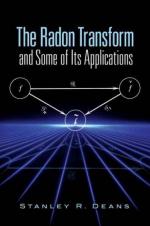|
This section contains 284 words (approx. 1 page at 300 words per page) |
Emanation refers to the most stable radioactive isotope of radon, which emanates naturally from rocks as a gas. Radon is a chemical element with the symbol Rn. The most dense gas known, radon is colorless and chemically unreactive. Along with helium, neon, argon, krypton, and xenon, it is classed as an inert (or noble) gas within group 0 of the periodic table. Twenty isotopes of radon are known, but only three occur naturally.Ernest Rutherford discovered thoron (radium-220) in 1899. By 1900, Friedrich Dorn discovered the isotope radon-222 and called it radium emanation (Em). Radon-222 (half-life 3.82 days) is produced by the decay of radium-226. For a period of time, each isotope of radium had its own name. In 1920, however, the name radon was adopted to refer to all the isotopes of the element, although the name emanation and symbol Em still are sometimes used. Radon is highly radioactive and has a very short half-life. The chief use of radon is in the treatment of cancer by radiotherapy because it decays by the emission of alpha particles. Principally found in rock and soil, the element is also found in some spring water, streams, and to a very limited extent in air. Radon is created by the radioactive decay of its precursors in minerals, most often uranium-238, from which it diffuses in tiny quantities into air as a gas. Its presence in homes and other buildings is important because radon produced from surrounding soil and rock can reach levels regarded as being dangerous to people due to its suspected role in causing lung cancer. Radon emissions are more prevalent in some areas of the U.S. than others, but the seriousness of the problem is under debate.
|
This section contains 284 words (approx. 1 page at 300 words per page) |


